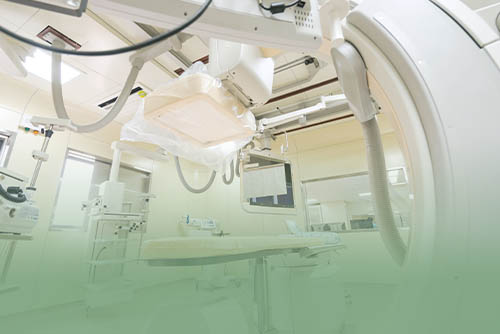Total knee replacement surgery has come a long way since its inception. Previously, this was a highly-involved procedure that left patients with sizeable scars and an extended recovery. New technologies, such as the CORI total knee system, are optimizing patient outcomes.
CORI: A Perfect Combination of Navigation & Robotics
Dr. Kyle Hazelwood, orthopedic surgeon at Inland Orthopedic Surgery and Sports Medicine and a vital part of the Pullman Regional Hospital Orthopedic Center of Excellence, explains what the CORI system entails—describing it as a two-part system, utilizing navigation and robotics.
“The navigation portion allows us to customize surgery for each individual patient. We take several different data points, starting with alignment in the leg, and we give the computer this information—which then generates a digital model of the knee,” he states. “Then, we use that model to customize total knee replacement surgery based off the patient's unique anatomy, bony anatomy, and ligament anatomy.”
Using a robotic arm, Dr. Hazelwood is able to implement the plans that were designed for each individual patient.
“For example, if we were using the robotic arm and the surgeon got too close to the MCL ligament, the robot would shut off. It really only allows us to execute the surgical plan we've created,” he adds.
Short-Term & Long-Term Benefits
While there’s still not enough historical data to show better long-term outcomes using the CORI system, various short-term benefits have been identified. For example, some studies have revealed patient satisfaction to be greater using this system—as opposed to more “traditional” manual instrumentation.
A few newer studies have shown pain outcomes to be more favorable. And, the way the technology is designed has even shortened the preoperative work that patients typically undergo (e.g. imaging studies).
Of course, researchers will continue to monitor patients in order to inform potential long-term advantages. “It's a mechanical knee. Like anything mechanical, it wears out over time. Right now, I don't think we have enough data to really say that it lasts longer using this technology,” cautions Dr. Hazelwood. “Time will tell. We need to continue to research and study it.”
However, one aspect that Dr. Hazelwood feels strongly about is the accuracy attained by using the CORI system.
“It has been shown that there's more predictable, more precise alignment when we're using some of this technology,” he notes.
All on Board: Why a Team Approach Benefits the Patient Community
Even though the CORI system is relatively “new,” Dr. Hazelwood and his team have already proven to be early adopters of the technology—embracing the potential for efficiency and improved patient satisfaction.
“You have to have a big team of people to support you anytime you take on something new like this, including hospital administration. Our hospital CEO and surgery director really supported this once I told them we should look into it. I'm so fortunate to have the team that I do.”
This sentiment truly represents the collective team effort Pullman Regional facilities can be proud of, and which only benefits the surrounding communities.
“I practice in a community that I think is really informed and savvy, and it's exciting to bring something new to offer to our patients. They don't necessarily have to go to a big city like Seattle to have this type of surgery. We can offer it to them here,” shares Dr. Hazelwood.
“And, if this tool helps us be a bit more accurate and perhaps lead to a little less pain after surgery—and patients are more satisfied—that really makes me excited to have that capability.”
You may also be interested in:

